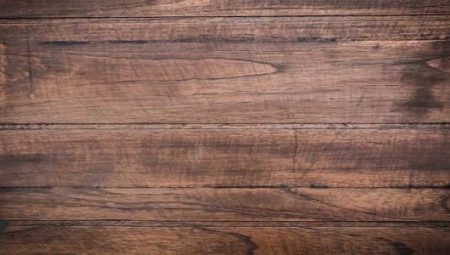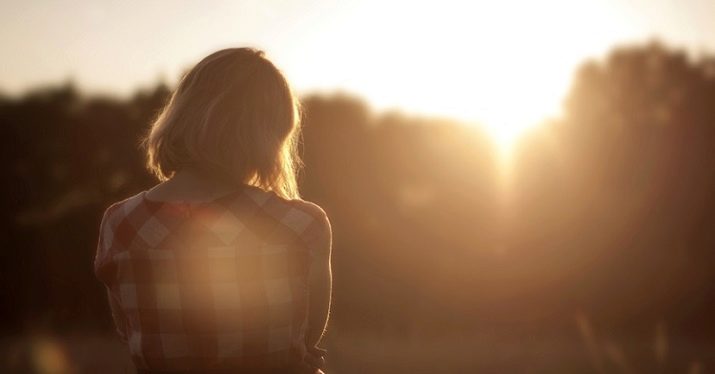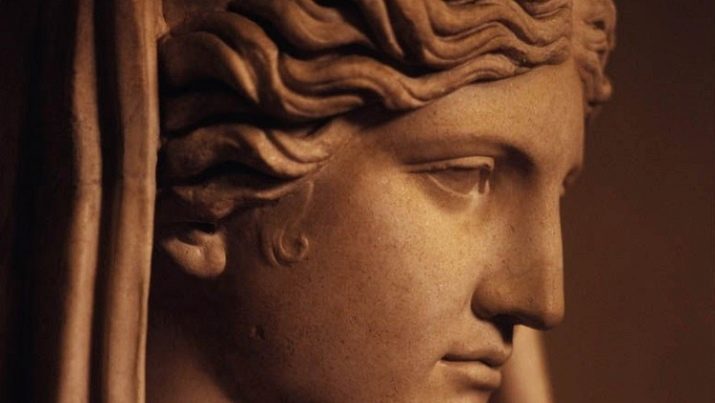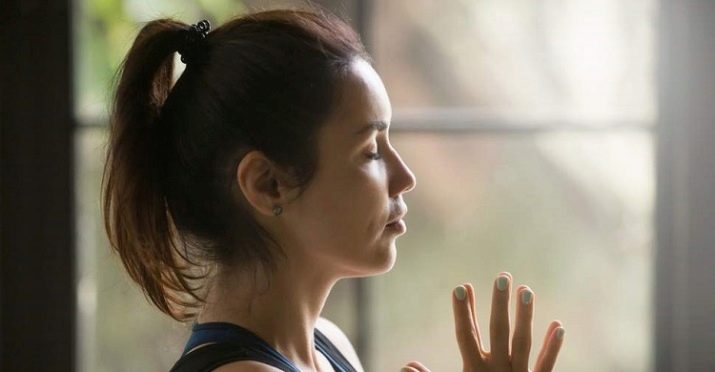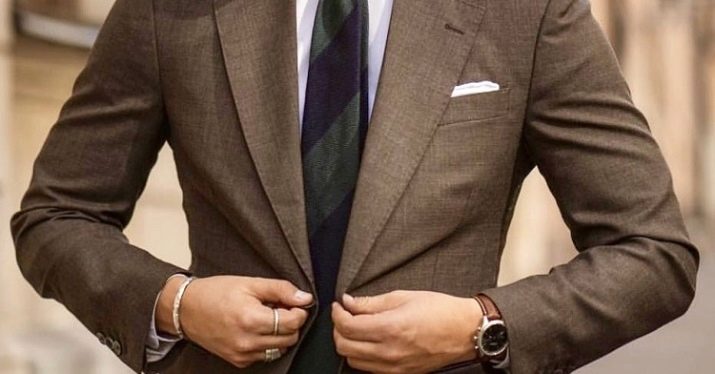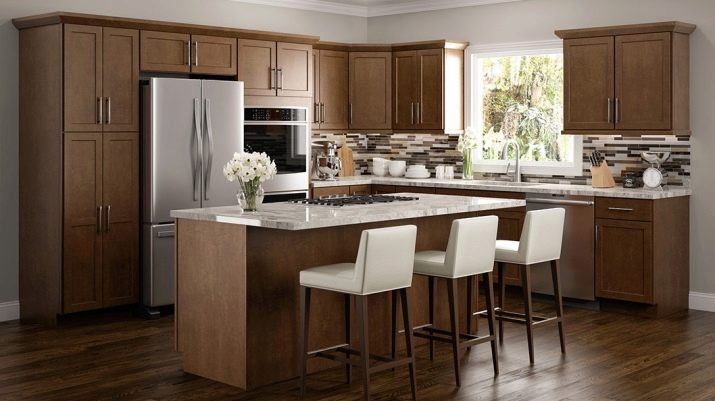The energy of the earth fills brown. It affects the formation of character lovers shades of the chocolate color spectrum. Interest in the brown tone is reflected in the choice of a similar color for the interior and things.
Symbols and characteristics
In nature, a variety of brownish tones are very common: fallen leaves, tree bark, bamboo, cinnamon, buckwheat, sand, soil. Many animals have a brown color. Color is a mixture of yellow and red tones. It can contain many shades: mustard, cream, brick, beige, brown, chocolate, terracotta, coffee, light brown, tea, brown, chestnut, bronze.
This color personifies life, somewhat slowing down its activity, therefore it is preferred to those who crave physical rest and peace.
He gives wisdom and ability to maintain an even relationship. Brown color symbolizes loyalty, dedication, constancy, stability, sustainability, responsibility and cohesion.
In psychology, there are positive color characteristics:
- common sense;
- thoroughness;
- reliability.
Those who prefer brown tones are not inclined to expose themselves to difficulties, it is easier for them to hide their heads in the sand. Negative characteristics:
- obsessive ideas;
- destruction;
- disappointments;
- depressed state.
Since ancient times, the Egyptians and other peoples who inhabited Africa, brown tones compared with the color of the earth. Such a color spectrum was for them a symbol of birth, life, hearth, strong family and stability. In ancient African tribes, coffee coloring was used as a hypnotic. Modern psychologists also argue that the dark brown curtains in the bedroom contribute to the rapid sleep.
In ancient Greece, the chestnut color was identified with the goddess of fertility and agriculture, the Hero responsible for the life cycle: birth, death and resurrection. Shades were often used in everyday life, enjoyed great honor, were identified with high yield and fecundity of women.
The symbolism of the Slavs was reduced to the association associated with the owner of the taiga - the brown bear. Color symbolized strength, power, indestructibility, perseverance. The Slavs avoided brown clothing because of the veneration of the totem animal.
Religions of the world have always been negative about chestnut tones:
- the muslims considered it a symbol of devastation, ignorance, spiritual and social decay;
- Christians tied chocolate shades with the worship of dark forces, passions, especially during the birth of the fascist movement, known as the "brown plague";
- Catholics identified chestnut tones with poverty, moral decay and debauchery.
Physiological effect
Light shades of brown gamma help to warm the body. Color does not burn. In a light brown room, blood circulation is improved and a feeling of soft heat is created. Color can improve immunity. The gentle stimulating effect of chocolate colors contributes to increased physical stamina.
Coffee color slows down the metabolic processes, activates the work of the heart, lowers blood pressure, calms the nervous system. Psychologists recommend that people with a high degree of anxiety surround themselves with objects of brown color. Tiger's eye stones and jasper help best.They promote relaxation and peace.
Before passing the exam, the coffee tone makes it possible to concentrate and helps to improve memorization.
Psychological impact
Advertisers use brown in order to convince the consumer that the product is natural. The coloring of the bark of trees, cinnamon, earth, nuts inspires the confidence of buyers. Manufacturers of cosmetics, which consists of natural ingredients, often use chestnut color. Psychologists recommend using this color of trust in trade and financial affairs.
The preference of a brown color by an individual indicates its conservative nature. In psychology, the unshakable life position of coffee-color lovers is noted. It is liked by people who feel the earth's crust under their feet, they stand steadily on it, confident in their abilities. Sometimes psychologists associate color with authoritarianism, stiffness, and a penchant for depression.
Devoted, hardworking, purposeful, rational person loves all shades of brown. A lover of the chocolate color spectrum appreciates family ties and honors traditions. But such people are often plagued by doubts. Often, fans of brown are simple, trivial, clumsy.
Fans of brown colors do not like to lie and manipulate. They are honest and open. Warm and soft tone disposes to frank conversations. The brown color spectrum never causes aggression and anger in others. It has a beneficial effect on the person, contributes to psychological relaxation.
Color is often associated with hard work to exhaustion. Exhausted, often not getting enough sleep, people often try to surround themselves with chocolate shades.
Chronic fatigue or depression can also cause a person to turn to coffee tones. Brown ebb gives rest to eyes. A person surrounded by such a color scheme can calmly relax.
The incorporation of the brown color gamut into the interior or clothing affects the person soothingly: a feeling of peace, harmony, and release from physical overloads is created. The desire to surround yourself with chestnut colors arises when you want to get rid of the painful thoughts or prolonged conflict.
In adolescents, there is a love for brown color, if desired, to drown out in itself a protest against the existing way of life, waking up sensuality. The color of the earth gives them the opportunity to experience stability.
Very often lovers of brown shades are denied to stand out from the crowd, highly spiritual personalities who want to rise above the primitive needs of the body. To people who cannot tolerate routine and uniformity, the whole brown spectrum seems dull and banal in color. Impulsive individuals lack the colors of brightness and color.
Brown and clothes
In ancient Rome, only slaves were allowed to walk in brown clothes. Noble people never wore it. In Russia, on the contrary, wealthy and highly esteemed people enjoyed the privilege of using chocolate shades in their attire. The Europeans, who lived in the Middle Ages, identified chestnut-colored robes with torment and hopelessness.
Modern lovers of brown clothing have a calm and patient character. They carefully consider their actions and make informed decisions. Never spend money on an unnecessary thing. Such people skillfully manage finances. Take good care of things. They love accuracy, cleanliness and order. They prefer silence and their own comfort.
Brown colors in clothes signal a great partner and reliable friend. Coffee lovers reach their goals. They are able to panic at the slightest deviation from the tasks. Have a habit of controlling the actions of others. Preference for brown tones is often given by people who want to stay in the shade.
Universal brown clothes suitable for any event. The color scheme of chocolate shades is suitable for business style and create a romantic image. Non-marking items are ideally used as casual wear. She is suitable for pale-haired blondes and dark-haired dark-skinned women.
Psychologists recommend using shades of brown in business-style clothing. The color scheme causes location to the person. There is a sense of trust and respect. An important meeting or interview with a potential employer is advised to wear clothes of this color. It testifies to the fundamental nature of the executive and responsible applicant. Color has to meet and further communication.
Young people rarely prefer brown things, linking them to fading. Young ladies should not give up brown clothes. With a successful combination with other shades, young people in chestnut colors look stylish, fashionable and spectacular. Playfulness and lightness of the image are not compatible with coffee shades; therefore, it is better to use other tones in difficulties in getting acquainted with the opposite sex.
Application in the interior
Since ancient times, people have preferred brown furniture. She instilled an awareness of safety and a sense of comfort. The brown interior is ideal for rooms, living room, kitchen, bathroom. It smoothes the contradictions of different generations, improves the psychological situation in the family.
Most people fill their apartments with a sense of peace and complete relaxation using the color of the earth. In a brown bedroom, a person can have a good rest and get rid of stress, but to improve the quality of intimate life, such coloring should be diluted with a peach or red tone.
Coffee shades bring to life a feeling of warmth and comfort. They are often used in the interior. Floor coverings, walls and furniture of chocolate colors help to get rid of the city rush, to hide from the problems.
The brown color is ideal for kitchen and dining areas. It prevents excessive saturation of the body, thereby eliminating overeating. But the loss of appetite does not occur. Reception meal in such a room brings great pleasure.
Delicate cream tones visually expand the space, have a beneficial effect on people, providing a mitigation of problems and confidence in a favorable outcome. Dark colors reduce space. To create a special comfort in the apartment are used warm shades of brown.
In the workplace, it is desirable to combine chocolate colors with cold shades: gray, golden, white tone.
